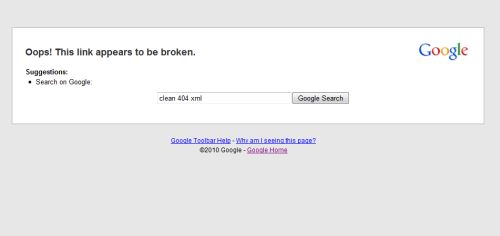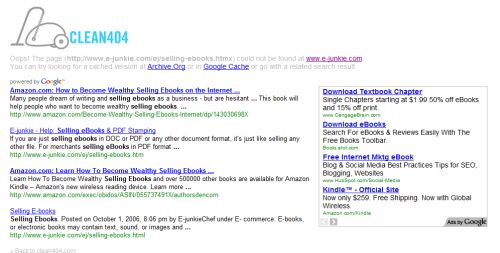I know that some of you have blogs of your own, so today I am going to tell you about a new feature that I started using on OneMint, and will be of interest to other bloggers and website owners as well.
Now, I know all you smart readers are wondering why I am telling you about a blog feature now, when I have never done so in the past. That’s because this feature has been developed by my best friend Robin (same guy who helped with the hack attack), and the thing works quite well.
I link to several websites in my posts, especially the carnival posts. Then there are people who leave comments and their names are links back to their own websites, if they chose to do so. Other bloggers and webmasters do the same thing.
Most websites link out to a large number of other web-pages – internal as well as external over a period of time, and some of these links go bad. Geeky types call this link rot. I see some of this in my carnival posts, and bigger blogs with a large number of comments will notice this with external links to the commenter’s blog, especially if the post is older than a year.
When a visitor clicks on a broken link often such a page appears:

The trouble with this is that these are links pointing to other websites and if they are broken, I lose a visitor who could have stayed on my own blog a little longer. And, since its an external page – I have no control on it, and cleaning up after broken links becomes a nuisance.
Clean 404 is an excellent new tool which automatically detects broken links on your website (internal and external), and when someone clicks on such a link, it redirects them to a page which contains search results from your page plus Google and Amazon ads, like the one you see below.

The good thing about this is that not only does it show users relevant links, it shows them Google Adsense ads and Amazon affiliate ads as well, and if you use any of these two services, your ads will be shown to the user. The ads will be in the ratio of 60:40 in your favor. 40% of the ad revenue from this source will go to Clean 404.
So, not only will you get a chance to retain visitors despite of link rot, you will get a chance to make a little money as well!
Installing it is very easy, as you just have to include one line of code in your page. You can find details here. When you install it, you will see a Clean 404 icon appearing on your sidebar. There are configurations which allow you to get rid of this, but it impacts the ad ratio.
In summary you get the following benefits:
1. You don’t have to worry about checking which links go bad – Clean 404 does it for you.
2. Clean 404 automatically finds bad links and redirects users to a page which has ads as well as relevant links.
3. User experience is greatly enhanced as they don’t see a broken link any more.
4. You get to keep your visitor and possibly earn some money too.
This tool was launched today, so all you early adopters can take it out for a test ride right-away.
Here are some links with more details:
We will be back to regular programming tomorrow.

Archive.Org does that, Google also does it to some extent by caching the pages for a bit.
Clean404 landing pages show users the option to lookup the page’s copy in Archive.Org as well as Google Cache.
Sorry it this is slightly off topic.
Is there a term or a name for a making a link that stays permanent even after a the original page is gone?
I could not find it. Maybe you can lmgify me.
If this has not already been done, then it is absolutely doable. When a blogger makes a link, simply have the blogging software mirror/cache the page (e.g. “wget –mirror –level=5 http://someurl“) and keep the page permanently on-site.
Pages get updated, I understand, but one can also keep a header on top of the mirrored page that says when the mirror was taken and what is the original link. Older version is always better than a broken link.